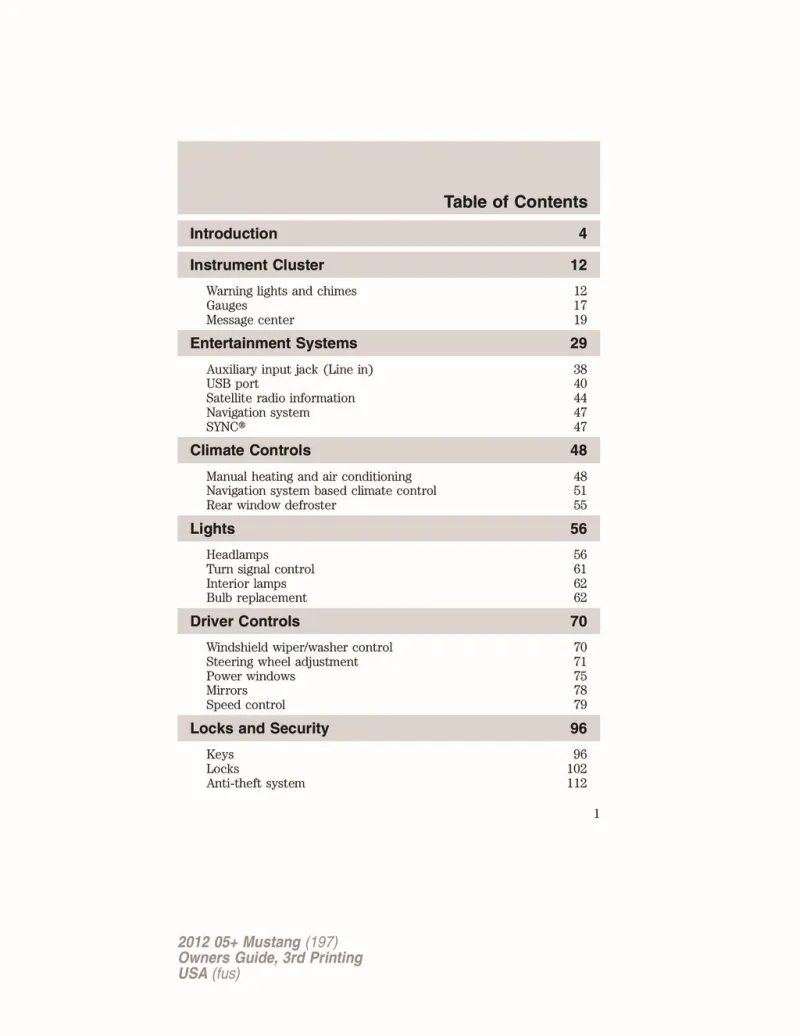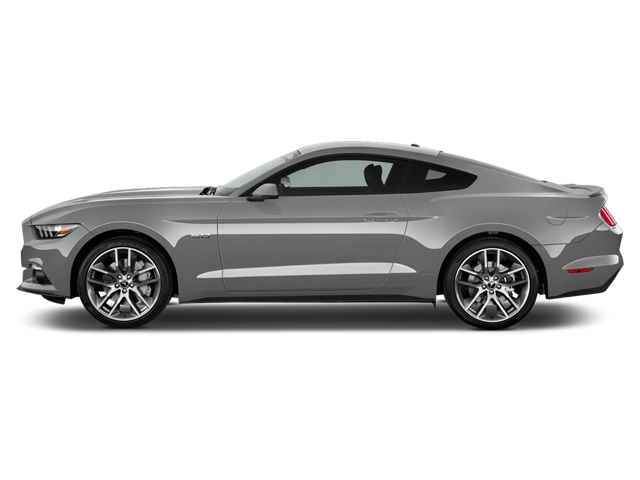2012 Ford Mustang Owner's Manual

Table of Contents
2012 Ford Mustang Overview
Introduction
The 2012 Ford Mustang stands as a tribute to classic American muscle, blending nostalgia with modern performance. Designed for those seeking a thrilling driving experience, this iconic vehicle offers a wide range of options to satisfy enthusiasts and casual drivers alike. With its distinctive styling and roaring engine lineup, the 2012 Mustang remains a formidable player in the sports car segment.
Powertrains
The 2012 Mustang lineup boasts impressive powertrains, featuring a standard 3.7-liter V6 engine that churns out 305 horsepower and 280 lb-ft of torque, delivering a satisfying blend of efficiency and performance. For those craving more power, the 5.0-liter V8 found in the GT model produces a jaw-dropping 412 horsepower and 390 lb-ft of torque. Both engines are paired with a 6-speed manual transmission or an optional 6-speed automatic, ensuring a dynamic driving experience whether you're on the highway or the racetrack.
Trims
Features
Inside the 2012 Mustang, drivers can enjoy a mixture of modern technology and classic design. Standard features include a four-speaker sound system, an auxiliary audio jack, and Ford's SYNC system for hands-free calling and music. Higher trims offer upgrades such as premium sound systems, leather upholstery, and advanced navigation systems, ensuring every ride is as comfortable as it is exhilarating.
Owner's Manual
The owner's manual for the 2012 Ford Mustang provides essential information for maximizing the ownership experience. It covers vehicle maintenance, operation of various features, and troubleshooting tips to assist owners in getting the most out of their Mustang. This comprehensive resource is designed to guide Mustang enthusiasts in understanding their vehicle's capabilities and ensuring its longevity.
User manual download
The Ford Mustang owner manual for the 2012 model year is to be found in PDF downloadable format on this page. The owner manual for the model year 2012 is free and in English, but the repair manuals are usually not easy to get and may cost more.
Manual Questions
Fill the form below and someone will help you!

